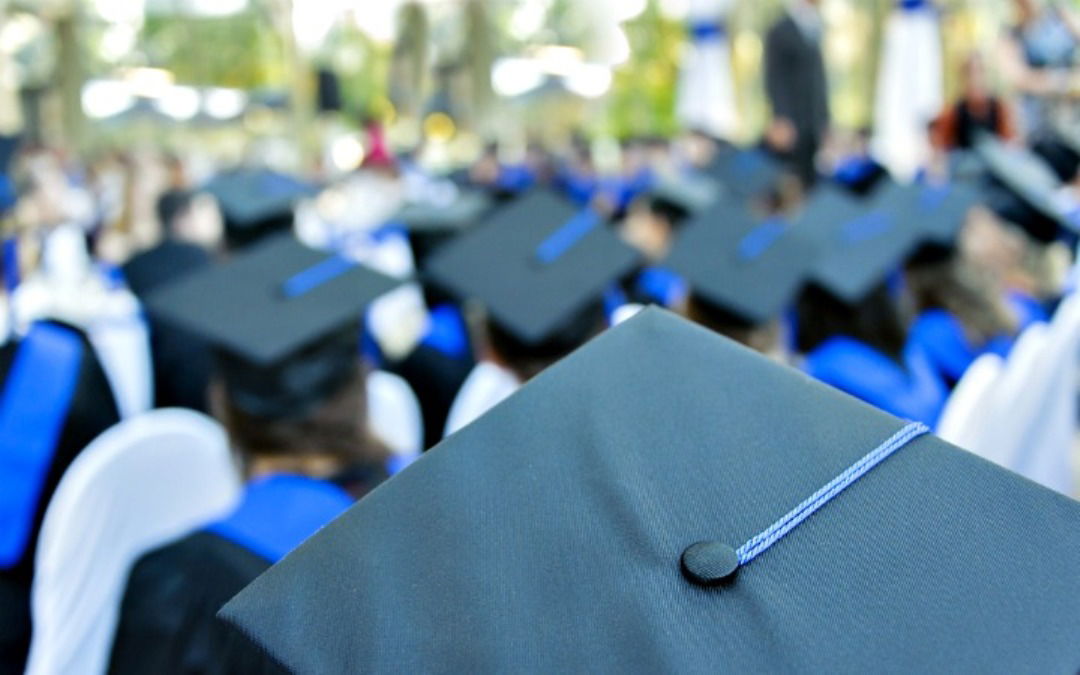Student loans are a reality for many college students in the United States. While taking out student loans may be imperative to pursuing higher education, they can also be confusing and leave you straddled with student loan debt for years to come.

To deal with this reality responsibly, it’s important to understand the complexities of student loans. That means understanding the difference between federal loans, grants, and private student loans. It also means learning about interest rates and the way they will affect your financial future.
Here’s a guide to understanding the average student loan interest rates and how they fit into your finances as you make your way through college and beyond:
What should you know before you take out a federal student loan?
Education is important, and that includes educating yourself on student loan interest rates and the intricacies of taking out these loans.
Average Interest Rates
Here are the average interest rates for federal student loans from 2006 to 2023:
- Undergraduate students – 4.67%
- Graduate students – 6.23%
- PLUS loans for students and parents – 7.27%
Interest Rates for 2023-2024
The federal student loan interest rate for the 2023-2024 school year is:
- Undergraduate Federal Direct Stafford Loans: 5.498%
- Graduate Federal Direct Stafford Loans: 7.048%
- Federal Direct Grad PLUS Loans: 8.048%
- Federal Direct Parent PLUS Loans: 8.048%
Federal student loans are disbursed with what are known as “grace periods,” which vary in length depending on the kind of loan you have taken out.
Direct Unsubsidized Loans, Direct Subsidized Loans, Unsubsidized Federal Stafford Loans, and Subsidized Federal Stafford Loans all have a six-month grace period. This means that, upon graduation or falling below half-time student status, you’ll have six months before you have to begin repaying your student loans.
Meanwhile, PLUS loans, which both students and parents can apply for, have no grace period. Once you have received your first payout for this type of loan, you’ll need to begin repaying right away. PLUS and other loans can also include fees you’ll need to pay upfront, which vary on the size of the loan.
Check Out Our Top Picks for 2024:
Best Private Student Loans
How are student loan interest rates trending?
Federal and private student loan rates have shifted, trending sharply up and down over the past 10 years. Keep in mind that, while you may take out a loan with a specific interest rate as an incoming freshman or first-year graduate student, loan rates shift each year.
As a result, the interest rates change each year. This can greatly affect the status of your loan and, ultimately, your monthly bills upon graduation.
In general, federal student loan rates are on the rise. In 2008, the average student loan interest rate was 6.0% for undergraduates and 6.8% for graduate students.
In 2008, PLUS loan recipients took out loans with a 7.9% interest rate. Grad students and PLUS loan applicants’ interest rates remained stable from 2006 to 2012, then experienced a general downward trend. Direct Unsubsidized Loans for graduates are at 5.28% and Direct PLUS Loans are at 6.28% as of 2022.
Meanwhile, federal undergraduate loan interest rates declined significantly from 2008, bottoming out at 3.4% in 2011. Since then, they have risen, as well, and show signs of continuing to increase over the years to come. As of 2022, undergraduate loan rates stood at 3.73%, with signs pointing toward a continued upward trend.
What are average interest rates for private student loans?
Oftentimes, a federal student loan isn’t enough. This is where private student loans come into play. They can help you supplement the gaps between federal loans and personal funding. Perhaps unsurprisingly, these rates tend to skew higher than standard federal student loans. However, they remain close to loan rates offered by the PLUS student and parent program.
Private loans can also be more complex to sort through, as loan rates vary from one lender to the next. You’ll have to shop around for the best private lenders and weigh your options accordingly.
Consider the following figures based on a $10,000 loan from a typical private lender, when you apply without a cosigner:
- 5-year variable interest rate – 8.86%
- 5-year variable interest rate with deferred payment – 9.45%
- 10-year fixed interest rate – 9.75%
- 10-year fixed interest rate with deferred payment – 9.97%
Clearly, these rates are significantly higher than federal loan rates, even at federal loans’ highest levels. However, if you’re looking for a way to save, there is the option to include a cosigner on your application.
How will cosigners affect student loan interest rates?
A cosigner is essentially someone who will join you on your loan application. This person will take on the responsibility for your loan in the case that you cannot repay your loan. As a result, your loan becomes their loan, so entering this agreement is a personal, as well as a financial one.
If you find yourself in a position where you cannot make monthly payments on your loan, this will have a negative effect on your cosigner’s credit as well as your own. Keep this in mind as you consider including a cosigner on your student loan application.
That said, if you have access to a cosigner whom you are comfortable entering a financial relationship, that person can be of great benefit to your loan application. Ideally, you’ll want to select a cosigner with a long and positive credit history, which can be a boon to your credit status.
This can be especially helpful if, as an incoming college student, you don’t have a long credit history or any credit history at all.
Here are a few scenarios where you can see the difference in rates between applications with and without cosigners:
- Borrower credit score – 610
- Interest rate without cosigner: 12%
- Interest rate with cosigner: 7.6%
- Borrower credit score – 700
- Interest rate without cosigner: 9.31%
- Interest rate with cosigner: 6.15%
The difference in these interest rates can add up to thousands over the life of your loan. If you have low credit or no credit at all, utilizing a cosigner in borrowing a private loan can be of great help to your current and financial future.
What else should you consider?
A student loan, whether federal or not, is a loan just like any other, which means it comes with both pros and cons. Be sure to shop around for the best rates possible and do the math ahead of time, rather than signing up for the maximum you can take out.
If possible, pay as much as you can from your own funds. Chip away at your debt as much as you can as soon as your grace period ends. Explore other funding options such as grants and scholarships, as well as work-study at your school and other creative ways to keep the sum of your loan as small as possible.
Unfortunately, you may have to consider the overall price, too, as some private institutions are exorbitantly expensive. If you receive funding from a school without the hefty price tag, it may be worth it to reconsider your school of choice.
On the other hand, education is a unique experience, and everyone has their own priorities. Just don’t count out your options until you’ve explored them all. And that includes taking into account student loan interest rates.




